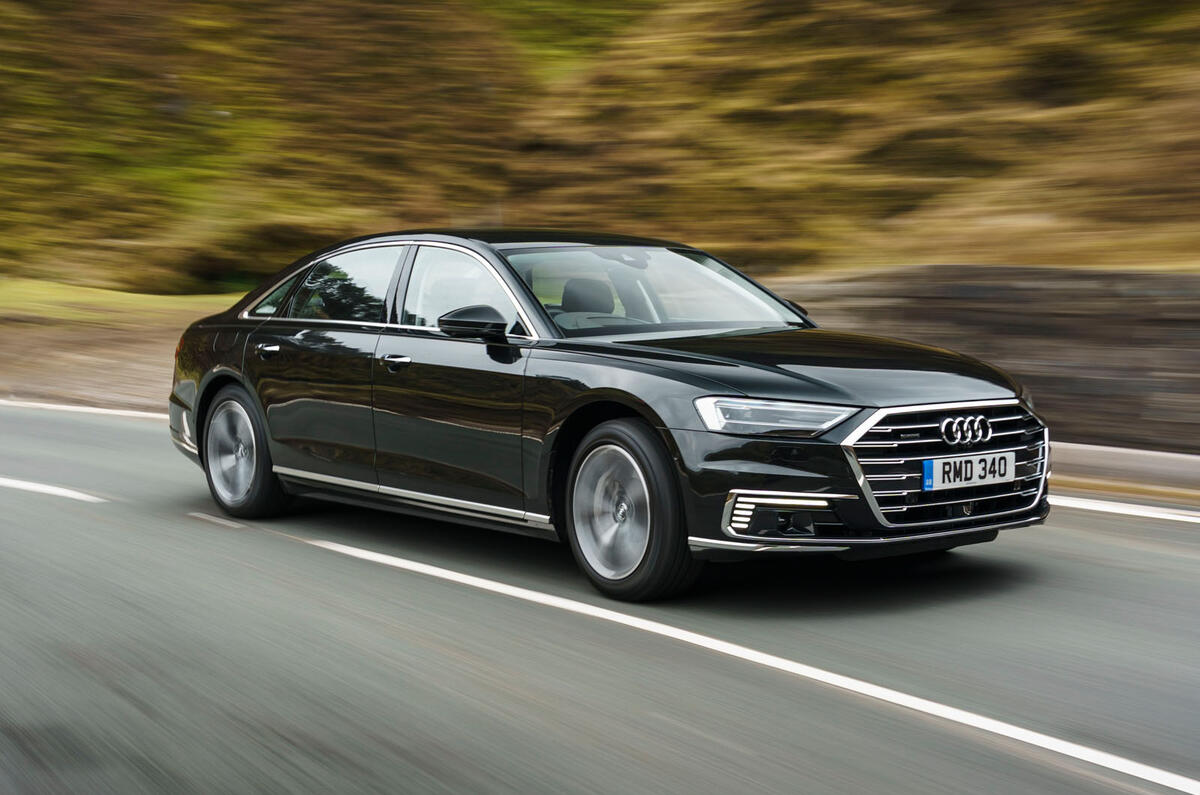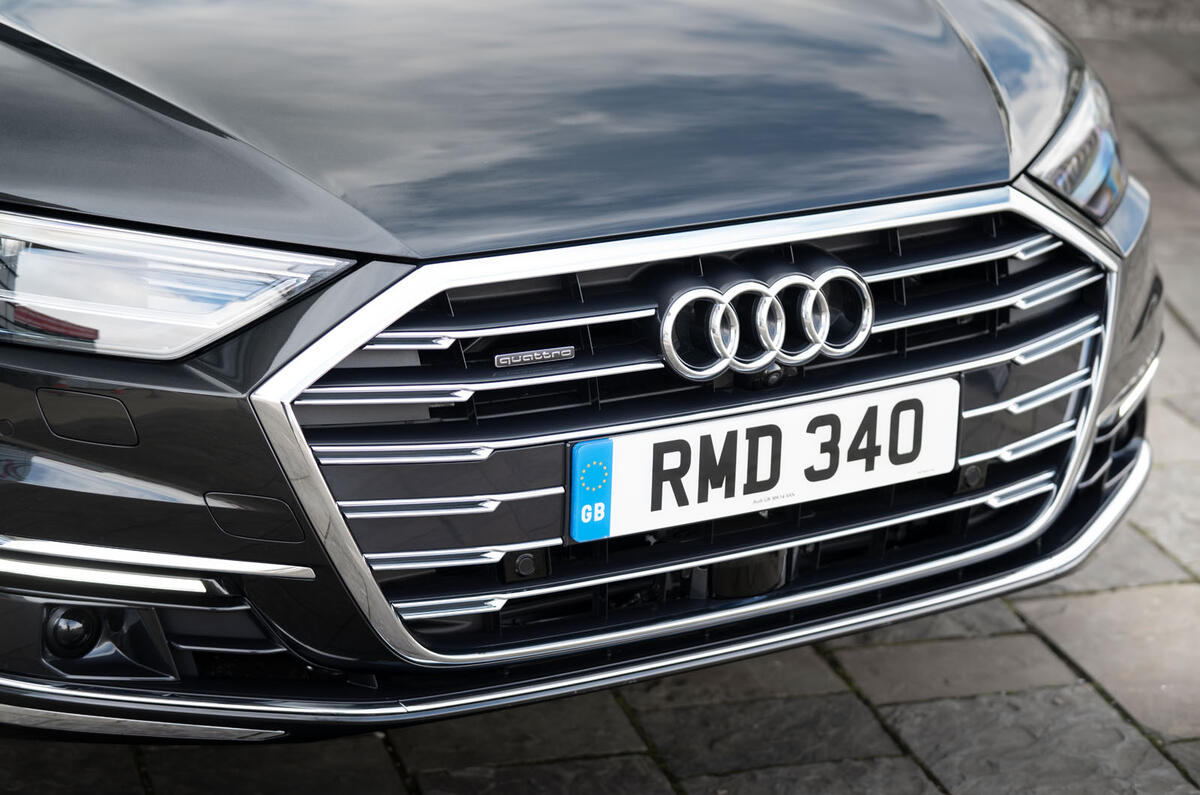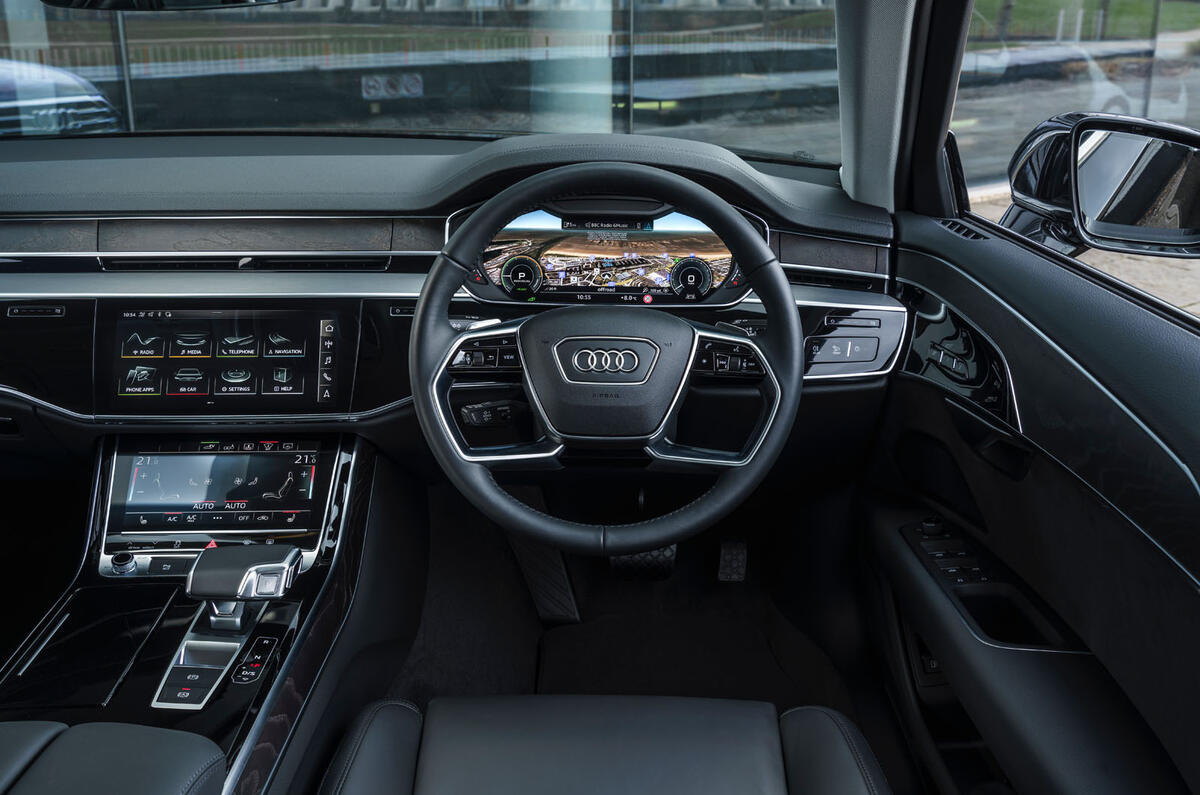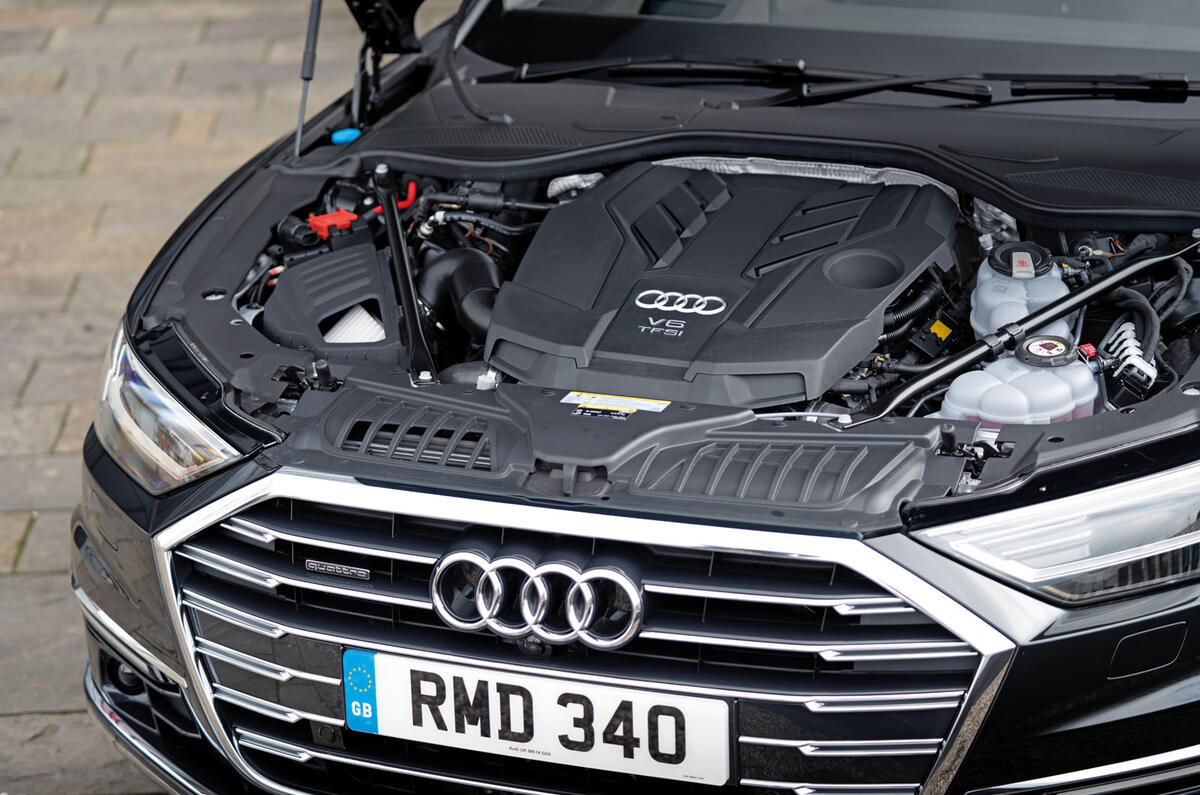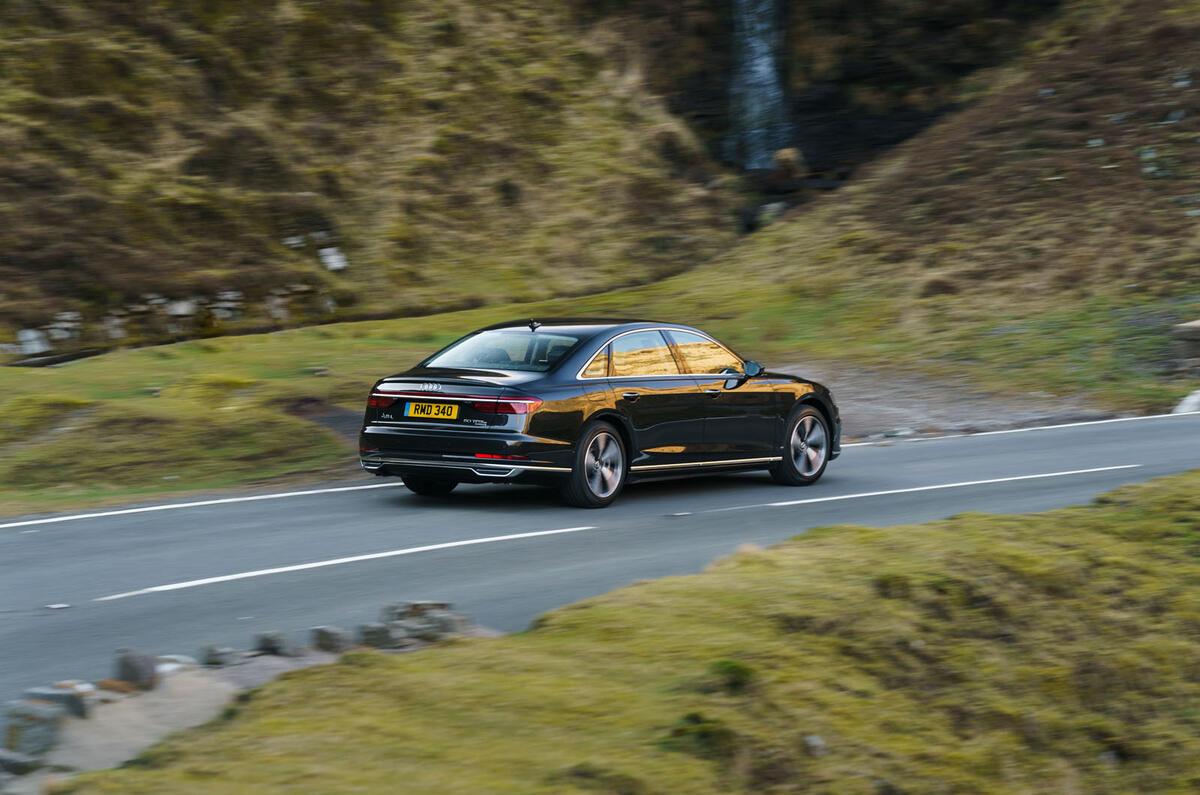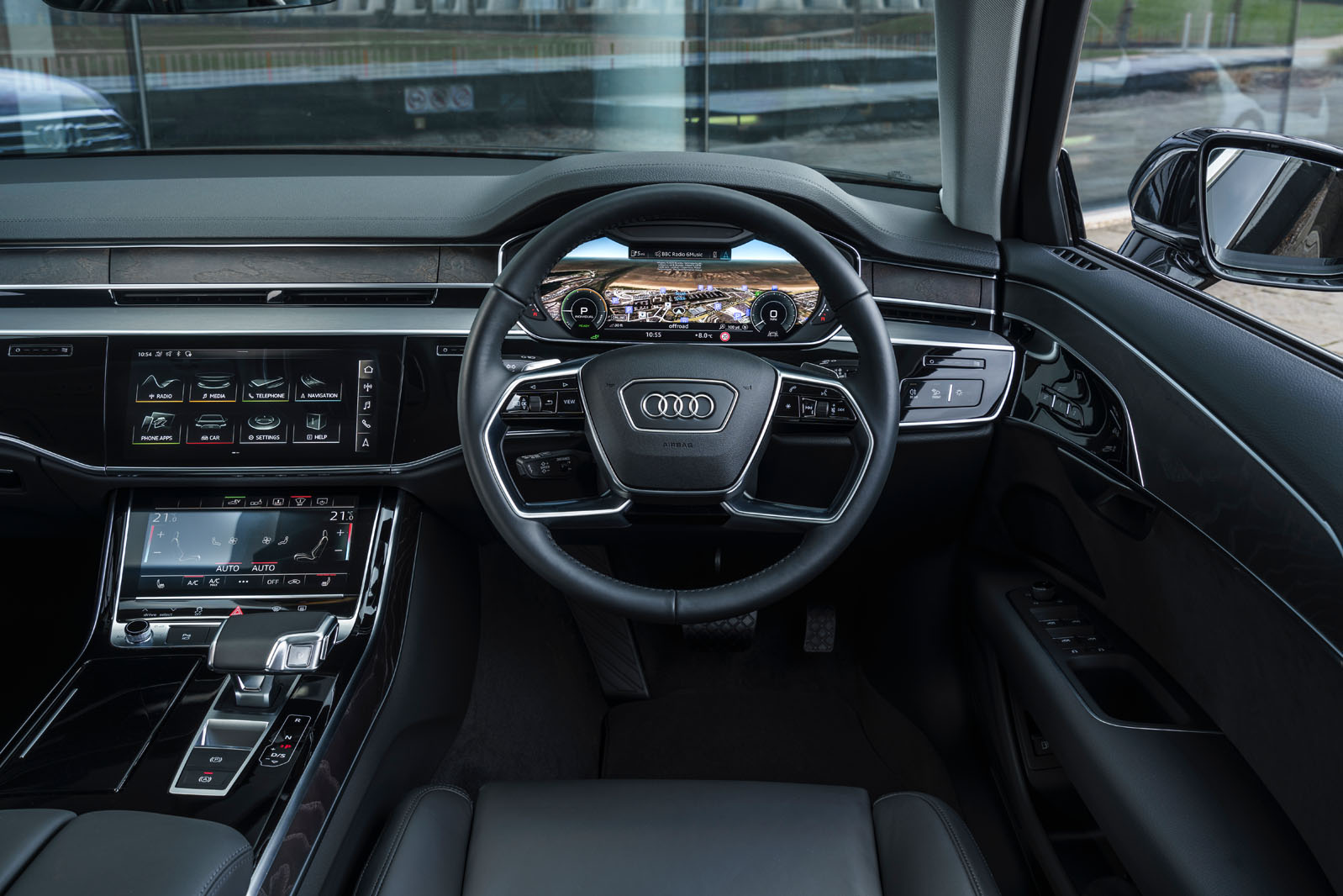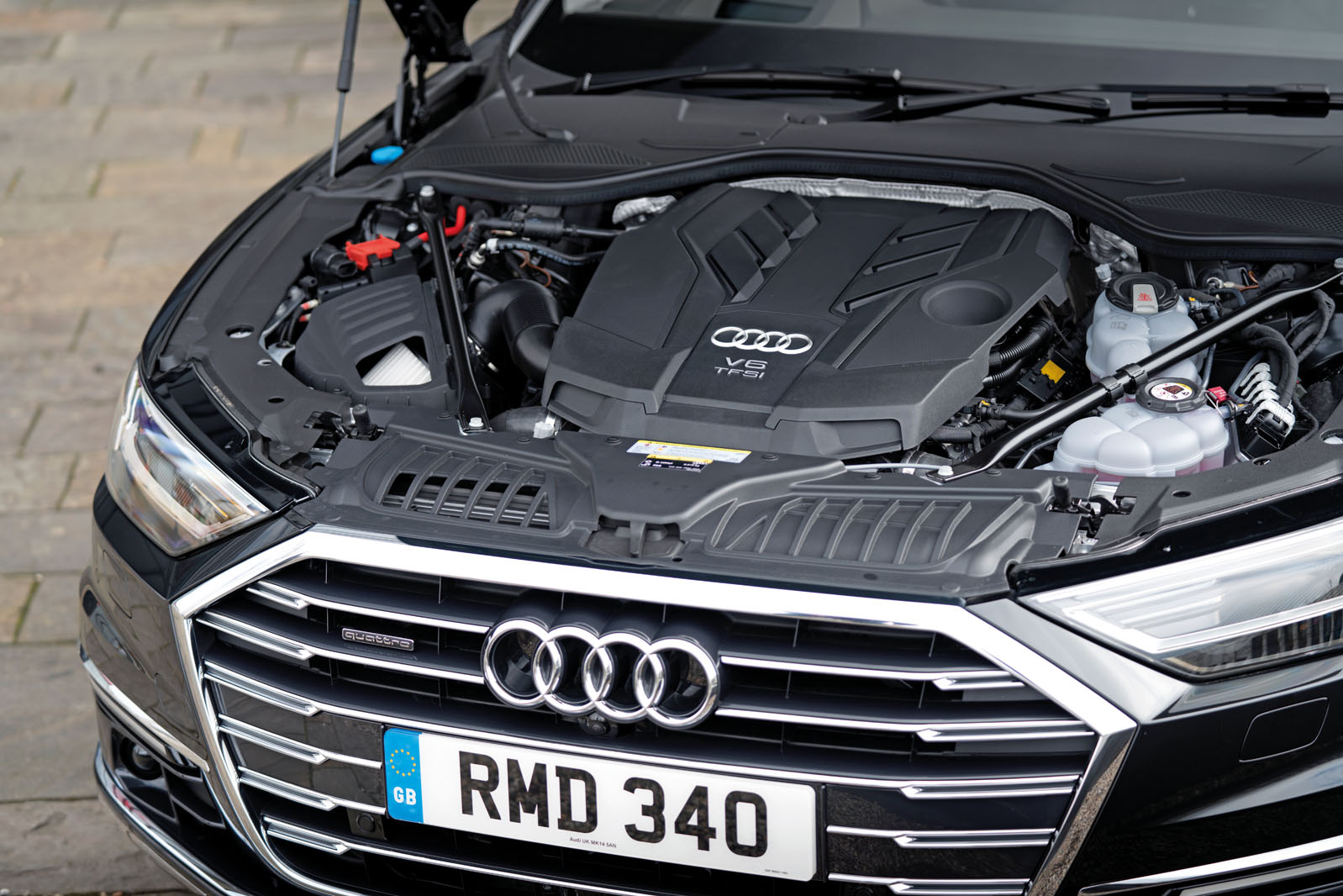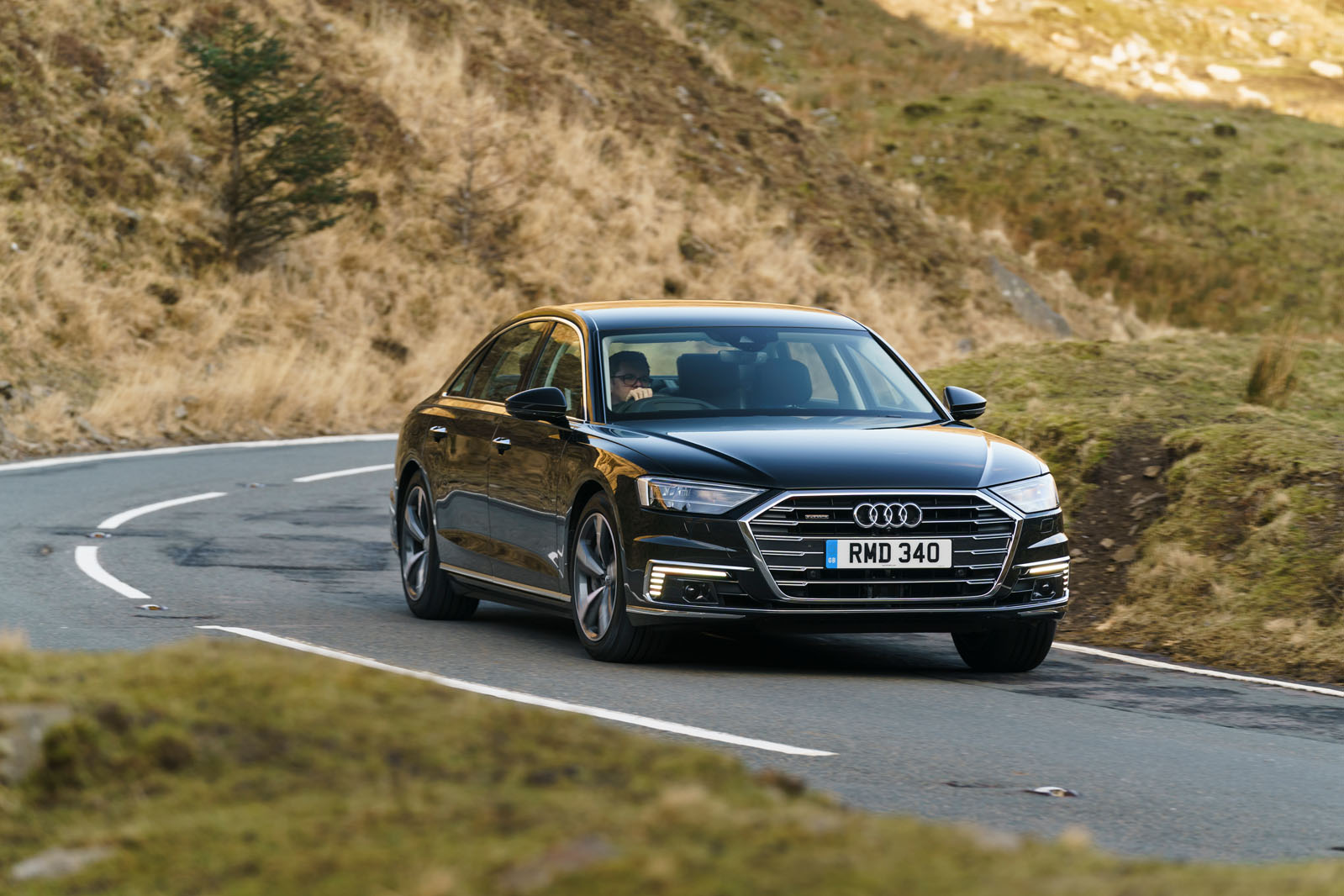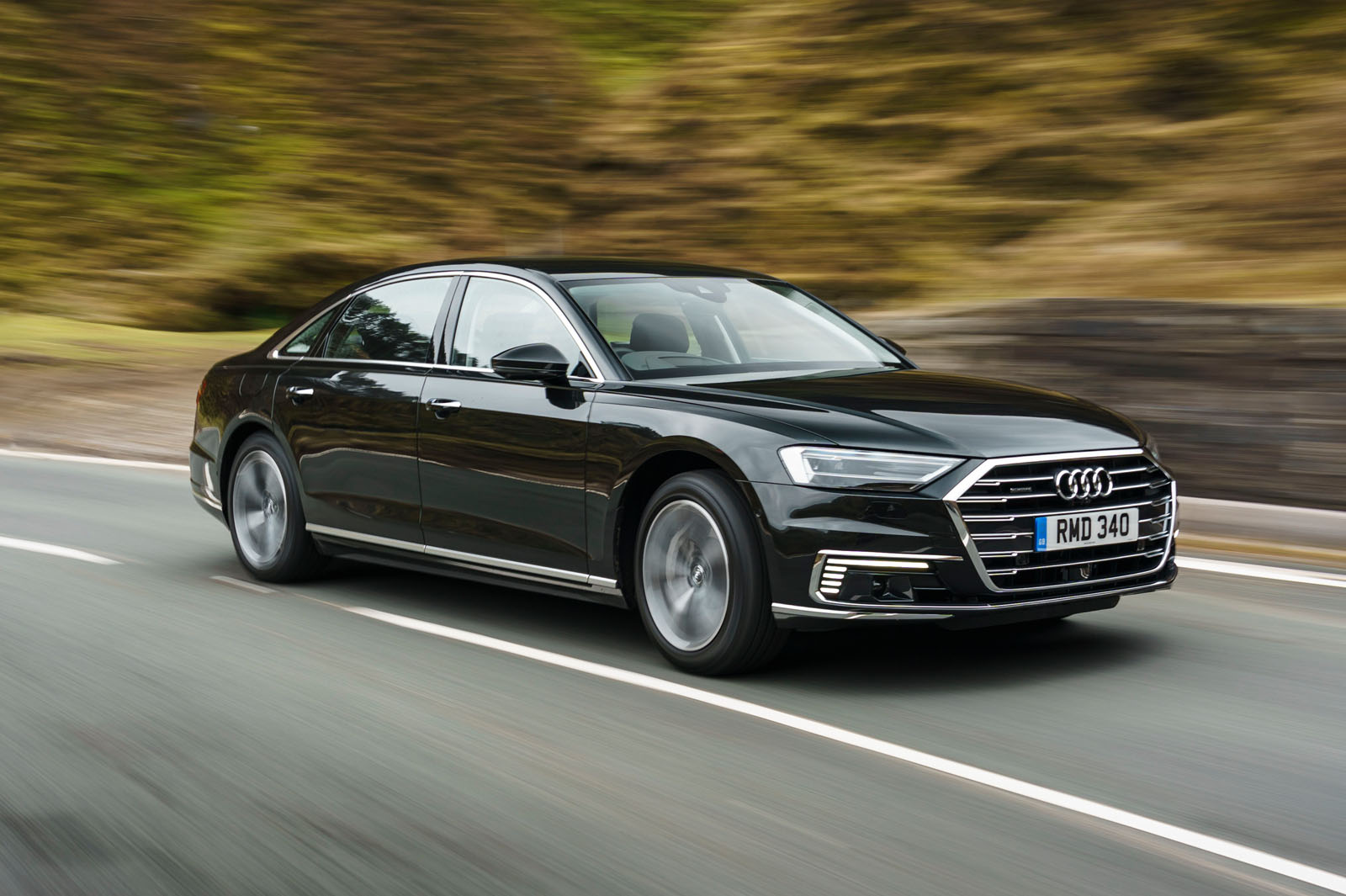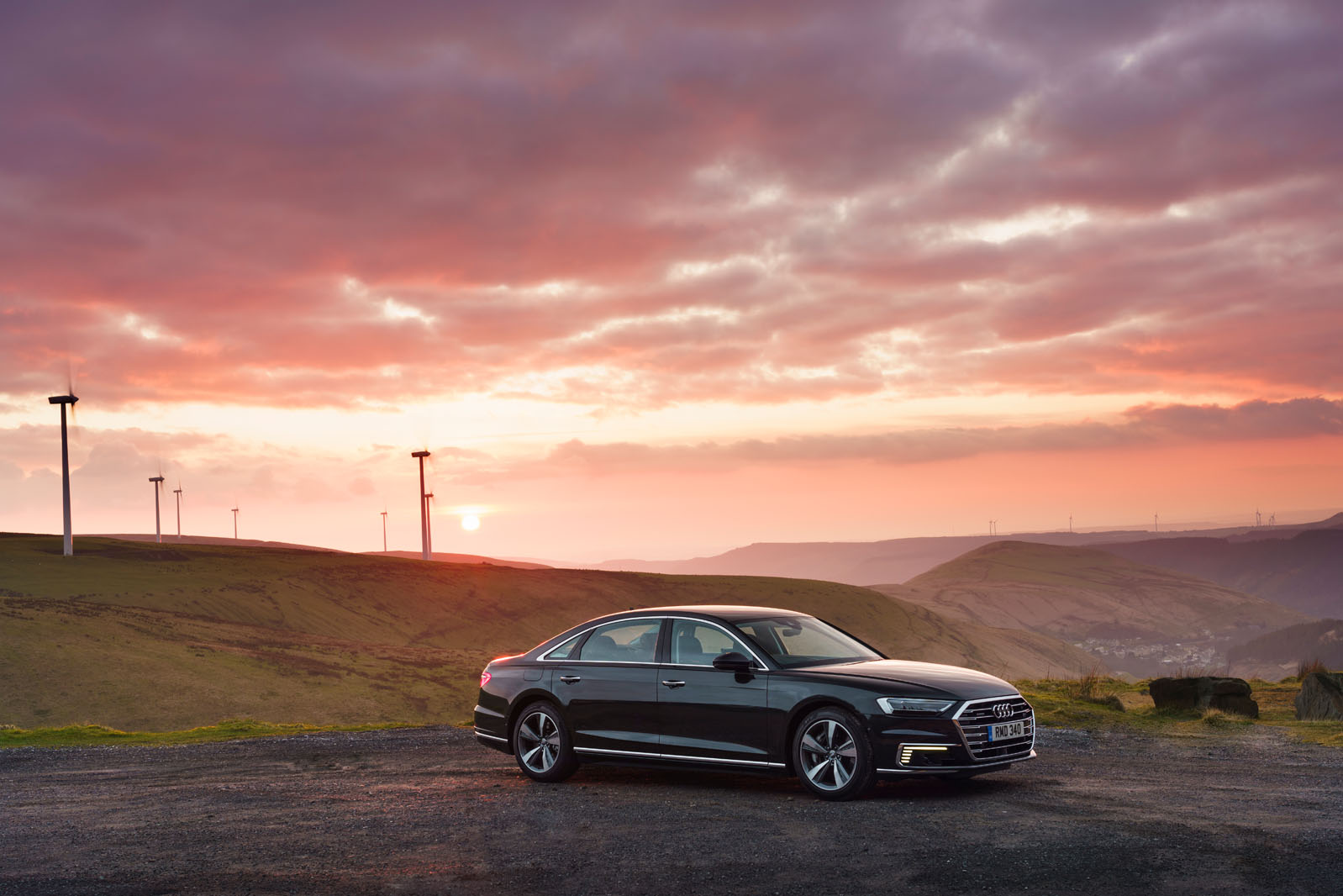Like its rivals, Audi prefers to scale broadly the same cabin architecture among its range of saloons than design something bespoke for the top-of-the-line A8.
It’s why the stern, corporate geometry of our test car’s dashboard, which is inlaid generously with digital displays on both the centre console and within the instrument binnacle, is recognisable from the less prestigious A6 and Audi A7. This is also clearly a more austere, serious and business-like place to sit than the curvaceous innards of an Mercedes-Benz S-Class or the sporting plushness of the 7 Series so will appeal more to chauffeur-driven operations than to owner-drivers.
The A8 does come alive at night, however, when the fine-line lighting embedded about the cabin glows warmly in whichever hue you’ve selected.
No A8 passenger will find themselves left wanting for space or amenity, particularly if they are aboard the long-wheelbase version, which adds 130mm of leg room for rear occupants and beats the Mercedes and the BMW in this respect. Four-zone climate-control and heated, electrically adjustable seats are standard fit even in the rear, which gets its own display control panel.
The long-wheelbase model also gets electric sunblinds, while for the driver there is a vast suite of aids, including predictive navigation, which automatically slows the car as you approach junctions, roundabouts and low-speed zones. Like many electric cars, the A8 can pre-condition its interior prior to departure and this is controllable through the myAudi smartphone app.
As is typical for plug-in hybrids that house their battery beneath the boot floor, luggage capacity is significantly reduced in the A8 60 TFSIe, falling from the 505 litres of the regular model to just 390. This is much less than even the comparatively small Audi A4 offers, and neither can the A8’s rear seats be folded forward to recover space.
Audi A8 infotainment and sat-nav
Audi’s latest MMI system splits opinion – and for good reason. Mounting a high-definition 10.1in touchscreen (for infotainment) directly above another, 8.6in display (for climate) will appeal to the magpie in anyone, but the dearth of physical switchgear means it’s difficult to make quick commands on the fly and the glass attracts unsightly fingerprints like nothing else. The command wheel found in the 7 Series is certainly easier to use.
In truth, pin-sharp graphics and helpful haptic feedback can’t disguise the fact that Audi’s MMI is also less intuitive than the iDrive system in the BMW when it comes to navigating menus, although the range of connectivity, which includes Amazon Alexa, is comprehensive.
Our test car was also fitted with the Comfort and Sound pack, and the Bang & Olufsen sound system that this option brings is certainly worth having.



